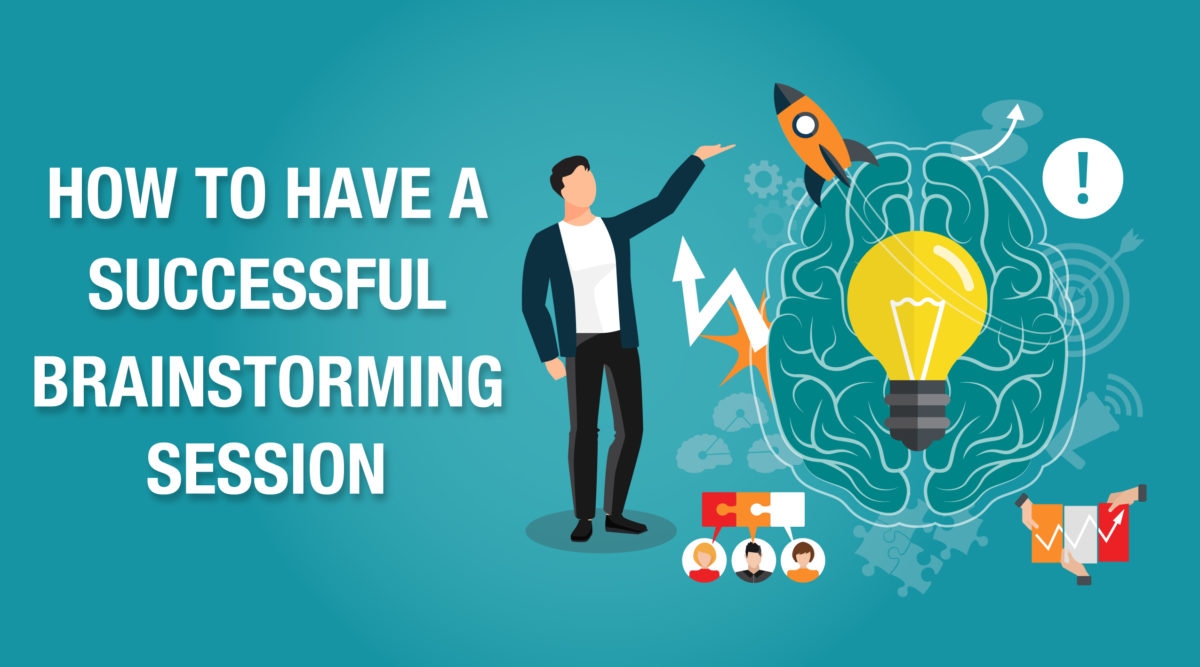From Different Perspective
Need an idea? Can’t come up with one on your own? Successful brainstorming sessions can be a great way to bring many different perspectives and ideas together to come up with one great idea. However, not all brainstorming sessions are productive, right? We have all been there. Many brainstorming sessions end with off-topic conversations, wasted time and no solution to the problem. However, they don’t all have to be that way.
How do you have a successful brainstorming session?
Step 1. Establish the Goal
What is the goal of the brainstorming session? Write down the goal and make sure everyone understands the goal, and any background information about the problem, before attending the meeting. Often, people assume the goal is understood by everyone but that is not always the case. An unclear goal can lead to ineffective, off-topic discussions. It is important to keep everyone focused on the purpose of the meeting. This also gives everyone the opportunity to come to the meeting with ideas already in mind.
Step 2. Pick a comfortable space for the meeting
It is hard for people to be creative in a normal boring environment. Have your meeting in a place that is different than your normal workplace. Make sure it is in a place where your attendees can be comfortable and collaborate with each other.
Step 3. Gather a team
When deciding who you want to attend your brainstorming session, keep in mind you are looking for differing opinions. Invite people with different perspectives. If possible, you should have representations from different genders and races. You should also have people who know a lot about your problem and people who can give you an outside perspective. However, you should not have more than seven people in your meeting. The more ideas, the better; however, it is easy to get off topic with a large group.
Step 4. Establish a leader
You need to have someone to keep everyone on track. They should write down ideas on a white board and draw people back to focus if the topic of the conversation strays away from the problem.
Step 5. Simplify or break down the problem
Sometimes staring at the whole problem can be overwhelming. Where do you start? Try simplifying or breaking down the problem into smaller categories. For example, if you are brainstorming ideas for a new company tagline that portrays your company’s values, use those values as categories: service, trust and honesty. This will give you specific topics in which you can target your imagination.
Step 6. Allow people to write down ideas
How many times have you forgotten an idea because others were talking at the time? Before brainstorming together, allow time for everyone to write down their initial ideas, then bring your ideas together. This will also allow people to write down any new ideas that they think of during the brainstorm.
Step 7. Share your ideas and brainstorm – leave criticism at the door
No idea is a bad idea. Leave your emotions and criticism at the door. It is important that people within your brainstorming session feel comfortable to express their ideas and opinions. When peoples’ ideas are criticized, it limits their confidence and their creativity. Many “bad ideas” can lead to something extraordinary, they may just need nurtured.
Step 8. When you find an idea that you like, expand on it
You found an idea that everyone loves. That is great. But, how can it be improved? Can ideas be combined? What problems do you see with the idea? Be analytical. Sometimes ideas have holes that you don’t recognize at first glance. Nurture the idea into its best form.
Step 9. Move to the other categories
If you split up your problem into multiple categories, be sure to return to those categories when you run out of ideas for one category. This will give you a direction for new ideas and inspiration.
Step 10. Repeat the process and pick out your favorite ideas
When you finish your brainstorm, pick out your favorite ideas. Make sure you understand the pros and cons of each idea. Even if you are not completely satisfied with your ideas, set them aside and take a break. End the meeting and step away from the process.
Step 11. Come back to your ideas
After a day or two, come back to your ideas with a fresh perspective. Are they still as great as you thought they were? Are they better than you thought they were? Nurture the ideas while your brain is fresh. If needed, schedule another brainstorming session.


